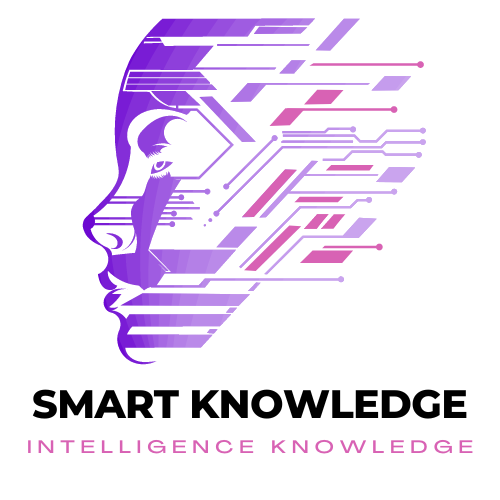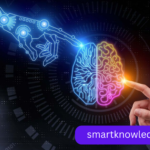Artificial intelligence (AI) is transforming industries and reshaping global technology. Among the many areas AI is impacting, warfare and military strategy stand out as significant beneficiaries. The introduction of AI-driven combat systems is revolutionizing how battles are fought and decisions are made in real-time. One of the most promising innovations in this space is Gold Knight-AI—a groundbreaking system designed to enhance military operations through advanced intelligence, autonomous decision-making, and data-driven strategy.
This blog post explores how Gold Knight using AI is set to transform military operations, the technology driving its capabilities, its various applications, and the ethical debates it raises. With AI becoming an increasingly integral part of warfare, understanding its role and potential impact is essential for policymakers, military professionals, and technology enthusiasts alike.
Introduction
The Evolution of AI in Warfare
Throughout history, warfare has evolved in line with technological advancements. From the discovery of gunpowder to the development of nuclear weapons, each new innovation has significantly changed the nature of warfare. In the present day, AI stands as the latest transformative force in military strategy. By harnessing AI algorithms to process vast amounts of data, predict enemy movements, and autonomously execute complex tasks, military operations are becoming faster, smarter, and more efficient.
It is the heart of this revolution, an advanced AI system developed to enhance military effectiveness in modern combat scenarios. Unlike traditional military tools, which often rely heavily on human intuition and decision-making, it uses machine learning, real-time data analysis, and autonomous capabilities to provide an edge on the battlefield.
In this article, we will break down the various ways in which Gold Knight is revolutionizing combat, from real-time intelligence to autonomous systems, while also addressing the ethical and practical concerns that come with using AI in warfare.
The Role of Gold Knight-AI in Data Analysis and Decision-Making
One of the greatest challenges in modern combat is the overwhelming amount of data generated by surveillance drones, satellites, radar systems, and other intelligence-gathering tools. Processing this information quickly and accurately is critical for effective decision-making, especially in high-stakes environments. Human operators, however, can only analyze so much data at once. Revolutionizing how military commanders manage information.
It is capable of processing massive amounts of data in real-time, using advanced machine learning algorithms to identify patterns and anomalies that would be difficult for humans to detect. By cross-referencing historical data, terrain maps, and live intelligence feeds, the system can provide actionable insights almost instantaneously. This capability enables military commanders to make informed decisions quickly, whether it’s repositioning troops, redirecting airstrikes, or deploying resources in critical areas.
In addition to analyzing raw data, it can simulate various combat scenarios based on the available intelligence. By running simulations, it can predict potential outcomes of different strategies, allowing commanders to anticipate enemy movements and plan accordingly. This ability to foresee future developments is a significant advantage in fast-paced combat situations where every second counts.
Moreover, it reduces the likelihood of human error, which can be catastrophic in military operations. While human judgment is essential, it can sometimes be clouded by stress, fatigue, or incomplete information. It offers a complementary decision-making process that is purely data-driven, helping to minimize risk and optimize tactical responses.

Applications of Gold Knight-AI
Autonomous Drones and Robotics
One of the primary applications of Gold Knight is in autonomous drones and ground robots. These systems, equipped with AI, can perform complex tasks such as reconnaissance, target acquisition, and even offensive actions without requiring constant human control. For example, an autonomous drone powered by Gold Knight in AI can patrol enemy territory, identify threats, and engage targets with precision.
Similarly, ground robots equipped with Gold Knight can be deployed for dangerous tasks such as bomb disposal, mine detection, or perimeter defense. These robots can navigate harsh environments, analyze threats in real-time, and take action without putting human soldiers at risk.
Predictive Analytics in Warfare
It excels at predictive analytics, which allows military commanders to anticipate enemy movements, predict supply chain needs, and optimize troop deployments. The system can process intelligence data from multiple sources—satellite imagery, intercepted communications, historical combat data—and use machine learning to predict enemy strategies.
This predictive capability is invaluable in combat, where knowing the enemy’s next move can mean the difference between victory and defeat. By simulating various battle scenarios, it helps military planners choose the best course of action, reducing risks and increasing the chances of mission success.
Combat Logistics and Supply Chain Optimization
Another key area where it excels is in logistics management. Military operations rely heavily on timely supplies of ammunition, fuel, medical supplies, and other resources. It uses AI-driven logistics models to predict the needs of troops, coordinate supply routes, and optimize delivery schedules.
For instance, Gold Knight can monitor real-time battlefield conditions and reroute supply convoys to avoid ambushes or areas of heavy enemy activity. It can also analyze equipment performance data to schedule maintenance before equipment failures occur, ensuring that all vehicles and weapons are combat-ready.
Autonomous Battlefield Strategies
In addition to providing tactical support, Gold Knight can be used to develop autonomous battlefield strategies. Using real-time data, the AI system can autonomously coordinate airstrikes, ground assaults, and naval operations in response to changing battlefield conditions. This level of automation reduces the need for human intervention in high-stakes situations, allowing military commanders to focus on overall mission objectives.
Optimizing Supply Chains and Logistics
Logistics is often the unsung hero of military operations. Ensuring that troops are well-supplied with ammunition, food, medical supplies, and fuel is essential for sustained combat effectiveness. However, military logistics can be a complex web of moving parts, especially in large-scale operations spread across multiple terrains and environments. Gold Knight aims to simplify and optimize military supply chains by using AI to predict logistical needs, coordinate deliveries, and avoid potential disruptions.
For instance, Gold Knight can analyze factors such as troop movements, consumption rates, and environmental conditions to determine the best supply routes. It can then dispatch autonomous supply convoys that navigate hostile terrain without human drivers, reducing the risk of ambushes or IED attacks. In addition, the system can monitor real-time battlefield conditions to adjust supply routes and timing, ensuring that resources reach their destination without unnecessary delays.
Beyond just delivering supplies, it also helps manage maintenance schedules for military equipment. By using AI to monitor the performance and wear-and-tear of vehicles, weapons, and machinery, the system can predict when maintenance is needed before equipment failures occur. This proactive approach reduces downtime and ensures that all equipment is combat-ready when it’s needed most.
In large-scale conflicts, where logistics can often be a weak point, Gold Knight offers a more streamlined, data-driven approach that ensures military forces remain operationally effective with minimal waste and maximum efficiency

Ethical Considerations and Challenges
Despite its many advantages, the rise of Gold Knight presents several ethical challenges. The idea of autonomous AI systems making life-and-death decisions on the battlefield has sparked widespread debate among military leaders, policymakers, and ethicists.
Accountability and Decision-Making
One of the primary ethical concerns is accountability. In traditional warfare, human commanders are responsible for their decisions, so determining who is responsible for the actions of autonomous systems becomes more complicated. If an AI-driven drone makes an incorrect decision or causes unintended harm, who is to blame? Developers, commanders, or the AI itself?
The Risk of an AI Arms Race
The development of AI systems like Gold Knight-AI could lead to an AI arms race, with nations competing to create increasingly advanced military AI. This arms race could destabilize global security and lead to unintended consequences, such as the proliferation of autonomous weapons capable of acting independently of human control.
Human Oversight
Ensuring human oversight in the deployment of Gold Knight is essential. While AI can enhance decision-making, the final call should always rest with human operators to prevent potential errors or ethical violations.
Future Prospects of Gold Knight-AI
The future prospects of Gold Knight are vast and promising. As AI technology continues to advance, the capabilities of Gold Knight will only grow, further revolutionizing military operations.
Integration with 5G and Edge Computing
With the rollout of 5G technology, Gold Knight will be able to process data even faster and operate with lower latency. This will enable the system to make real-time decisions more efficiently, especially in high-stakes combat environments. Additionally, the integration of edge computing will allow Gold Knight to process data closer to the battlefield, reducing the need for centralized data centers and improving response times.
Enhanced Human-AI Collaboration
As Gold Knight continues to develop, its ability to collaborate with human soldiers will improve. Future iterations of the system will likely incorporate more advanced natural language processing, allowing for seamless communication between human commanders and AI-driven units. This enhanced collaboration will ensure that military strategies benefit from both human intuition and AI precision.
Expansion into Cybersecurity
In addition to its applications in traditional combat, it could be expanded into the realm of cybersecurity. With military systems increasingly reliant on digital infrastructure, the need for AI-driven defense systems has never been greater. It could be adapted to protect critical military networks from cyberattacks, helping to secure the future of digital warfare.
Real-World Examples and Impact
While Gold Knight-AI is still in development, the impact of AI in military operations is already being felt around the world. Several real-world examples highlight how AI is transforming modern warfare, providing a glimpse into how it might further evolve military strategy.
AI-Powered Drones in the Middle East
AI-driven drones have been widely used in the Middle East for surveillance and targeted strikes. These drones can fly autonomously, gather intelligence, and execute precision strikes based on data analysis. The integration of AI allows for more accurate targeting and minimizes collateral damage. It takes this concept further by allowing these drones to operate in a coordinated fashion with other autonomous systems, creating a seamless network of AI-driven combat units.
AI in Cyber Warfare
AI is also making waves in cyber warfare. AI-powered systems are being used to detect and respond to cyberattacks in real-time, making it more difficult for adversaries to launch successful hacking campaigns. Gold Knight, with its predictive analytics and real-time decision-making, could be adapted for cyber defense, helping to protect critical military infrastructure from digital threats.
Logistics and Supply Chains in Conflict Zones
In conflict zones, AI is already being used to optimize logistics. In Iraq and Afghanistan, AI systems have been used to predict the logistics needs of troops and ensure that supply convoys are delivered on time. Gold Knight-AI could expand on this by providing a fully autonomous solution that coordinates logistics across multiple theaters of operation, reducing human error and increasing efficiency.

Conclusion: The Future of AI-Driven Warfare
Gold Knight-AI represents a new frontier in military technology, offering a range of capabilities that enhance combat effectiveness, improve decision-making, and reduce human risk. From real-time data analysis to autonomous combat operations, this system is poised to revolutionize how wars are fought in the coming decades. However, the rise of AI-driven warfare also demands careful consideration of ethical questions and international regulations to ensure that these technologies are used responsibly.
As the technology behind Gold Knight continues to evolve, it is clear that AI will play an increasingly central role in military operations. While its benefits are undeniable, the long-term implications of using AI in warfare remain uncertain. Will it lead to more efficient and humane conflict resolution, or will it open Pandora’s Box of unintended consequences?
We invite you to share your thoughts and join the conversation. How do you feel about the use of AI in military operations, and what ethical concerns do you believe need to be addressed? Leave a comment below and let us know your perspective on this evolving technology.










